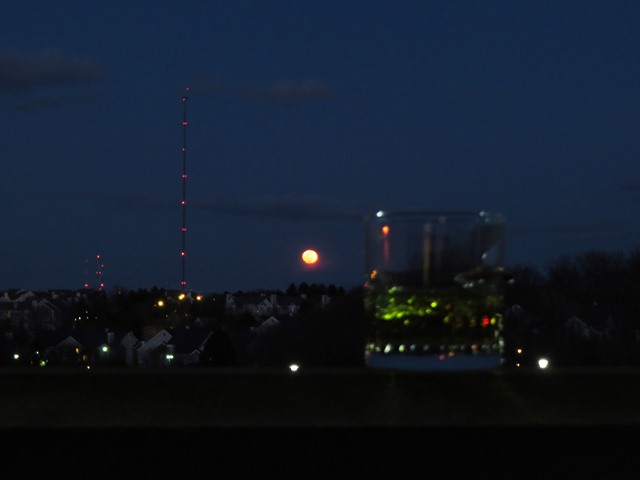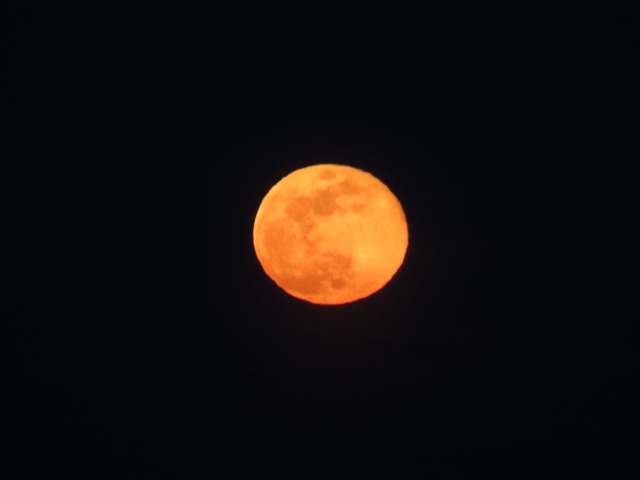 Bumped up to the top for today… photos below
Bumped up to the top for today… photos below
A “Blue Moon” is a second full moon during a calendar month. They are infrequent.
This year – 2018 – there are two occurrences.
The first was on 31 January, and it was a Super Moon, that is, the Moon was at perigee, its closest to your planet. It was also a Blood Moon, that is, in total eclipse, within your planet’s shadow. So, it was a Super Blue Blood Moon. The next Blue Blood Moon will be 31 Dec 2028. The next Super Blue Blood Moon will be 31 Jan 2037. Sometimes, however, a Blue Moon is defined as the 4th Full Moon in a season, which usually have only 3, in a cycle of roughly 2.5 years.
On 31 March 2018 – the Vigil of Easter, there will be a monthly defined Blue Moon.
The last seasonal Blue Moon was 21 May 2016 and the next will be 18 May 2019.
Easter falls on the first Sunday after the first “Paschal” Full Moon after the Vernal Equinox, which was 21 March.
The last time there was a Paschal Blue Moon was Wednesday, 31 March 1999.
The last time there was a Paschal Blue Moon on a Saturday, 31 March, as it will be this year was 1714 for the Eastern Hemisphere. In the Western Hemisphere it was still 30 March. However, the last time that we had a Paschal Blue Moon on a Saturday 31 March in both hemispheres, with the next day being Easter Sunday, was 1646.
The earliest that Easter can occur is 22 March, which will next happen in 2285. The latest Easter can occur is 25 April, which will next happen in 2038.
The last time Easter Sunday occurred on 1 April was 1956.
The phases of the Moon follow the 19 year Metonic Cycle. There is also an 8 year cycle or Octoaeteris which tracks a two day shift of the Moon’s phases. In the Gregorian calendar, a particular phase of the moon on a given date recurs every 372 years.
A Black Moon is the second New Moon in a calendar month. The last Black Moon was in 2016. The next Black Moon will be in 2019. New Moon’s occur every 29.5 days. However, sometimes a Black Moon is defined as the 3rd New Moon in a season of 4 New Moons, or a calendar month without a New Moon. I know, I know.
The March Full Moon is generally nicknamed the Worm Moon, since earthworms seem to be on the move again in northern climes. However, since 31 March is the second full Moon of March, we can maybe nickname it “Dave”.
UPDATE:




































Pingback: SPY VVEDNESDAY EDITION – Big Pulpit
I will gladly read any Moon Stuff you wish to share. Fascinating! We traveled to the path of totality last August. Unforgettable!
What a wonderful special effect for the Vigil of Easter!
Glory and Praise!
That’s no moon…its the twelfth station (of the cross). In best Alec Guiness voice.
As Faddah says: “The earliest that Easter can occur is 22 March, which will next happen in 2285. The latest Easter can occur is 25 April, which will next happen in 2038.”
Many of us here may see, D.V., the next latest occurrence (I’ll be 77 – also D.V.) And after that, the latest date on 25 April will be 2190. Which, unless we attain the ages of the Patriarchs, none of us here will see – on this our planet anyway.
Very cool.
This is the most orange moon tonight that I think I’ve ever seen — just as you captured it in your photo.